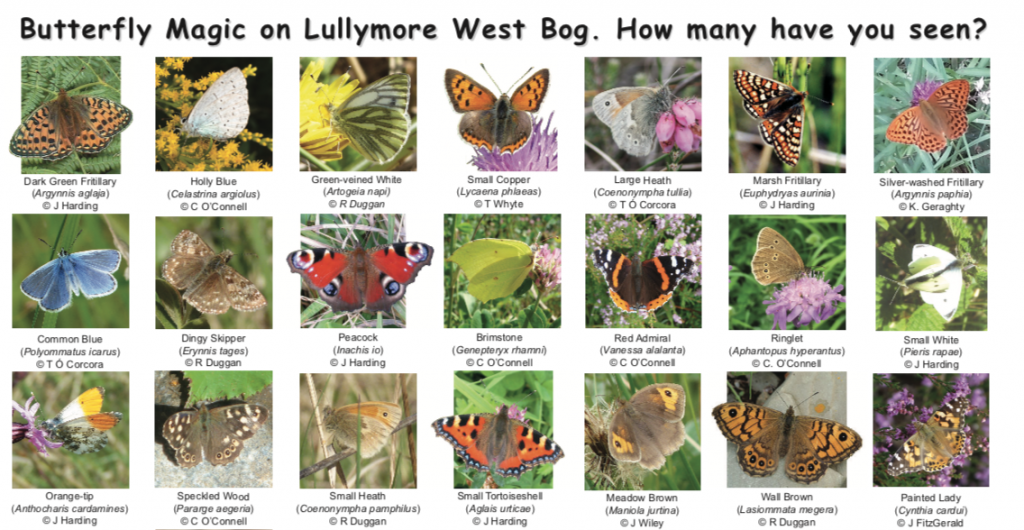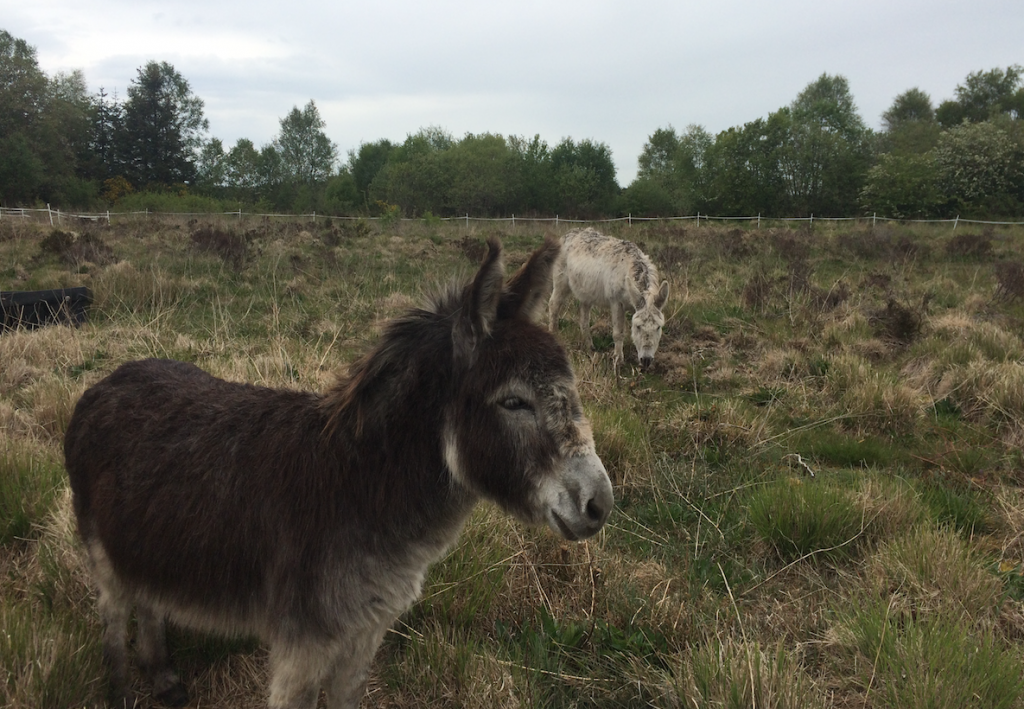Lullymore West Bog Nature Reserve is located in Co. Kildare. The site is owned and managed by the Irish Peatland Conservation Council (IPCC). It was used for industrial peat extraction in the late 20th century and has naturally regenerated with birch woodland and grassland habitats. IPCC’s conservation objective for the reserve is to enhance habitats for butterflies and in particular the rare and endangered Marsh Fritillary that breed there. Lullymore West Bog provides a refuge for 22 out of the 35 butterflies occurring in Ireland. IPCC have counted over 3000 individuals in one season running from April through to September from a butterfly transect that runs through the site.

Butterflies prefer open sunny and sheltered places with lots of variation in the habitats present – such as mature or tall trees, some dense undergrowth, sunny glades, patches of recently cleared ground and regenerating open wildflower grassy areas. This diverse structure creates the variety of habitats necessary for butterflies – many beautiful flowers providing nectar for adult butterflies or food for their caterpillars, the perfect breeding habitat and shelter over the winter.
In order to maintain and enhance the diversity of butterflies on the site, habitat management is vital. IPCC are working to enhance the habitat for breeding butterflies on Lullymore West Bog in a variety of ways outlined in this article and are engaging with the local community through training workshops and open days to transfer skills and build awareness for butterfly conservation in Ireland. Our work is guided by a conservation management plan – ‘Lullymore West Bog, Co. Kildare Conservation Management Plan 2018-2025’
Get Involved
IPCC are looking for volunteers to help with the following elements of this project. Please add your name to our volunteer email list or watch our facebook site for announcements of events.
- Removal of invasive scrub including gorse, willow and birch using loppers
- Weekly surveys of the butterfly transect on Lullymore West from April to September
- Vegetation and habitat survey of the reserve
- Monitoring donkeys grazing the site including fencing and providing water
- Survey the larval nests of the Marsh Fritillary butterfly
- Undertake a habitat condition assessment for Marsh Fritillary
- Read the Bonding with Butterflies Leaflet
- Download IPCC’s poster paper on this project presented at the National Biodiversity Conference in Dublin Castle 2019 entitled Lullymore West Bog Butterfly Project
- Make a donation to the project
- Attend an open day (see events)
Habitat Condition Assessment
The first habitat condition assessment for breeding Marsh Fritillary on Lullymore West Bog was undertaken in 2016. Lack of grazing and the encroachment of scrub including: Birch, Willow and Gorse were degrading the habitat.
Grazing
In 2017 IPCC introduced a grazing regime on the reserve. Two donkeys grazed the site from May to August. They ate the grass controlling the height of the vegetation and created an uneven (structured) vegetation height through poaching.

Habitat condition assessments in 2017 and 2018 showed an improvement in the habitat with an increase in the abundance of Devil’s Bit Scabious (Succisa pratensis), the food plant of Marsh Fritillary larvae. However, the assessment indicated that grazing must continue and that scrub encroachment was a major issue.
Scrub Removal
In October 2018, thanks to funding from the Community Foundation for Ireland, IPCC hired a contractor to mechanically clear all scrub from 1ha of the site. This work has opened up the site and increased the suitable habitat for the Marsh Fritillary and many other butterfly species. IPCC will continue to cut back scrub by organising bi-annual volunteer scrub clearance work camps.
Butterfly Survey
Weekly butterfly surveys are undertaken from April to October each year as part of the Irish Butterfly Monitoring Scheme run by the National Biodiversity Data Centre. There has been an increase in the overall abundance since grazing was introduced. IPCC conduct an annual Marsh Fritillary larval nest survey on the site. There has also been an increase in the number of nests recorded on the reserve since the grazing regime was put in place.
Vegetation Mapping
As part of the monitoring of the reserve IPCC are conducting a vegetation survey of Lullymore West Bog in 2019. The first vegetation and habitat map was drawn up in 2007. Through this work IPCC will be able to track the longer term changes observed in the vegetation present.
Community Engagement
IPCC are engaging with the community through hosting Marsh Fritillary monitoring workshops and public awareness events during Heritage Week and Biodiversity Week.
Future Actions
- Monitoring butterflies to continue
- Increases in butterfly abundance expected
- Community engagement events to continue
- Grazing and scrub removal to continue
- Bonding with butterflies expected
Thank You to our Supporters
This project is supported by The Community Foundation for Ireland under the Community Biodiversity Grant Scheme 2018, Kildare County Council under the Heritage Grant Scheme 2019 and IPCC Friends of the Bog.
